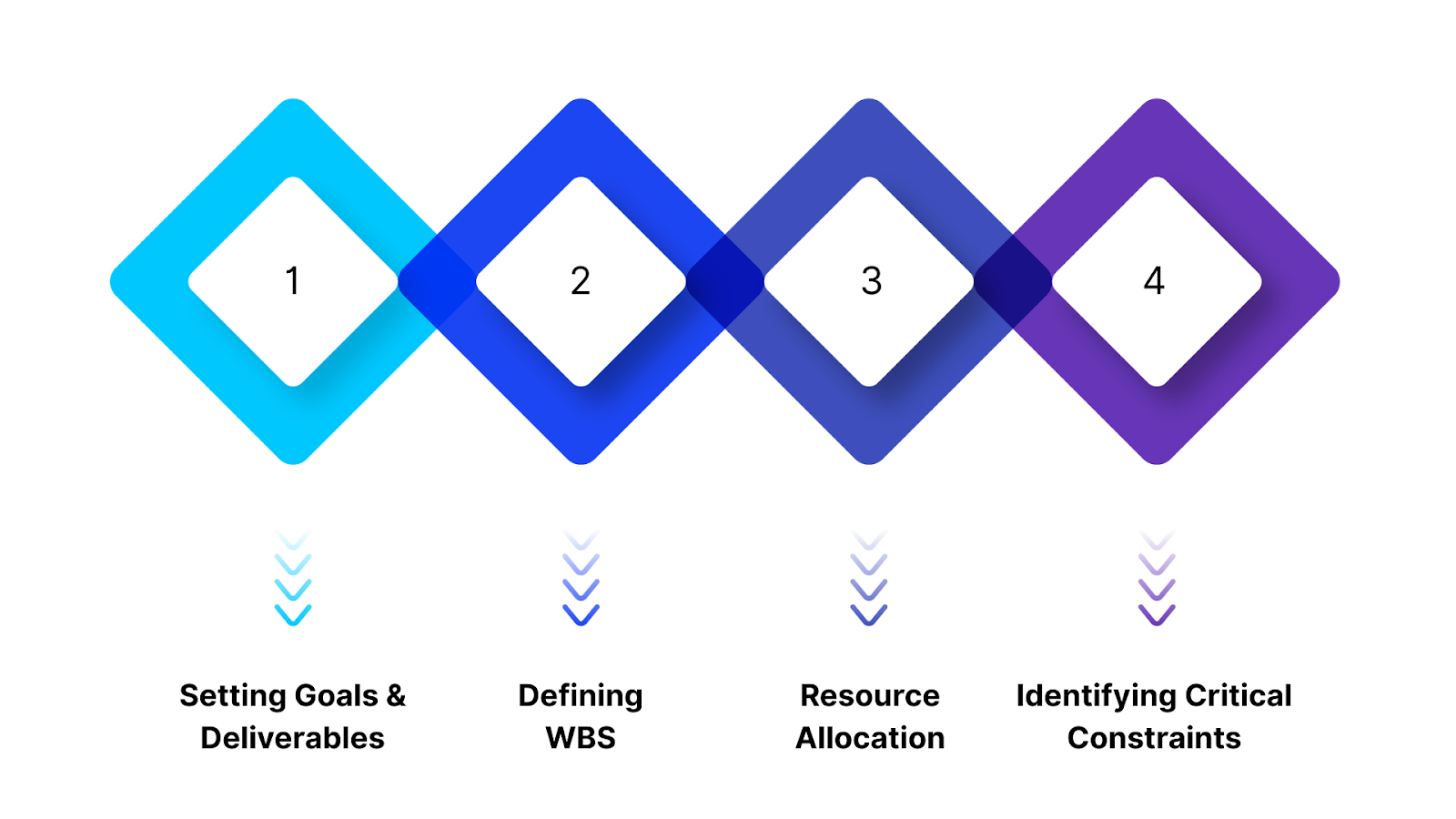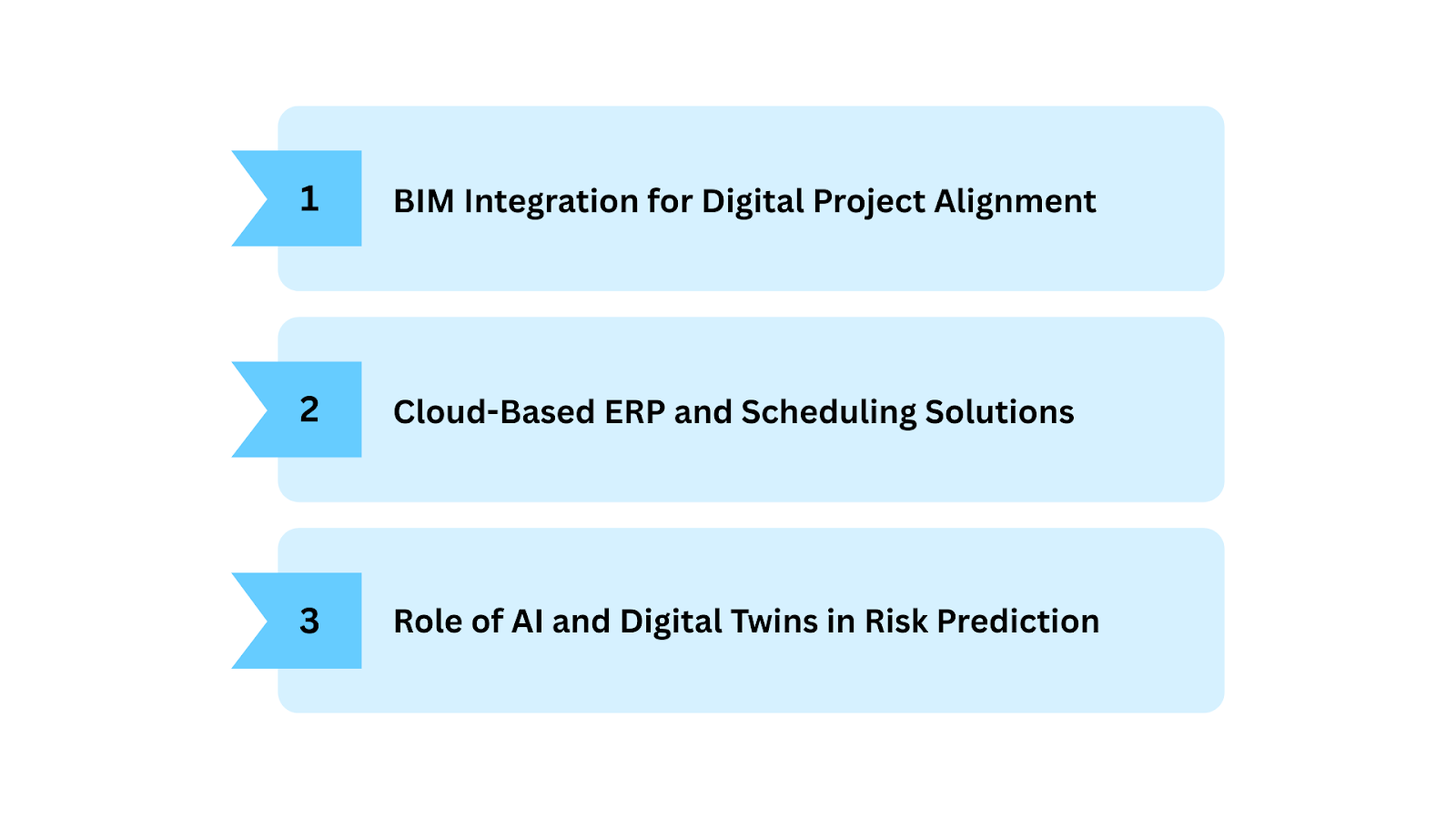
The Saudi Arabian construction industry is undergoing unprecedented transformation. The country is quickly expanding its infrastructure, and advanced planning and scheduling are now more critical than ever.
As the Kingdom of Saudi Arabia (KSA) accelerates its vision for the future through the ambitious Vision 2030 plan, the construction sector plays a pivotal role in realizing these grand ambitions. Mega-projects, a surge in real estate developments, and vast infrastructural transformations are pushing the industry to adopt cutting-edge solutions for project management and delivery.
In this blog, we examine why advanced planning and scheduling are essential for the success of Saudi Arabia’s booming construction sector.
Construction planning is the process of organizing and defining the necessary steps, resources, and timeframes required to complete a construction project successfully. It serves as the blueprint for the entire project, guiding the team through each phase, from conception and design to completion.
Construction planning involves coordinating among various stakeholders, including architects, contractors, project managers, engineers, and suppliers, to make sure that all aspects of the project are meticulously organized and efficiently executed.
Also Read: Construction Management Planning: A Complete Guide

Effective construction planning is essential for the successful execution of projects, making sure that goals are met, resources are allocated efficiently, and potential risks are minimized.
Here is the overview of the core steps involved in construction planning.
The first step in construction planning is defining clear goals, measurable objectives, and deliverables. These clarify what the project aims to achieve and how success will be measured.
Deliverables may include completed buildings, road networks, or infrastructure installations. Clear goals align stakeholders, set expectations, and guide performance tracking across all project phases.
A Work Breakdown Structure (WBS) divides the project into smaller, manageable work packages. It makes sure that no task is overlooked and that responsibilities are well-defined.
Benefits:
Effective resource allocation keeps projects on schedule and within budget.
Efficient resource allocation makes sure that there is no bottleneck in the supply of labor or materials, preventing unnecessary delays and optimizing productivity.
Early identification of financial, time, and regulatory constraints guarantees smoother execution. Key risks include cost overruns, weather delays, and labor shortages.
By planning contingencies and compliance checks early, project managers can reduce disruptions and maintain steady progress.
By identifying constraints early in the planning process, construction managers can proactively manage potential issues before they arise.

To meet the ever-growing demands of the Saudi construction sector, there has been a significant shift towards modern project management practices, which focus on efficiency, risk management, and resource allocation.
The new methodologies provide contractors, developers, and government bodies with the tools necessary to handle large-scale projects with greater precision and efficiency.
Building Information Modeling (BIM) creates a digital replica of a project, enabling real-time collaboration among architects, engineers, and contractors. It guarantees design, budget, and schedule alignment while reducing rework.
By visualizing the entire project lifecycle, BIM helps identify risks early, optimize resources, and accelerate construction timelines, a critical advantage for Saudi Vision 2030 mega-projects.
Cloud-based ERP systems unify HR, procurement, finance, and scheduling to improve control and transparency. Real-time analytics empower Saudi construction teams to make data-driven decisions and minimize project delays.
For instance, HAL's VAT Care solution helped Al Haram, one of Saudi Arabia's largest retail chains, seamlessly integrate its ERP system to comply with ZATCA's e-invoicing regulations. With eight stores and high transaction volumes, Al Haram needed a solution that ensured compliance without disrupting daily operations. HAL's VAT Care enabled smooth integration and efficient e-invoicing across all locations, ensuring full compliance with minimal business disruption.
Artificial Intelligence (AI) enhances risk forecasting and resource allocation by analyzing project data to detect cost and timeline risks early. Digital twins replicate physical assets, helping managers simulate construction scenarios and optimize performance.
For KSA’s mega-projects, these technologies allow contractors to plan proactively, prevent costly delays, and boost overall execution efficiency with HAL ERP’s AI-driven insights.
Also Read: Best ERP Inventory Management Software 2025

While planning and scheduling are often used interchangeably, they serve different purposes in construction management.
In essence, planning is about “what” needs to be done, while scheduling is about “when” it will be done.

Various scheduling methods are used to make sure projects are completed on time and within budget. Each method serves a different purpose and can be applied based on the project's complexity:
Milestones mark key project phases, such as foundation completion or structural installation, helping stakeholders track progress and maintain accountability.
Task sequencing guarantees activities follow the most efficient order, preventing delays and resource conflicts. For example, excavation precedes foundation work, and finishing begins only after structural and electrical tasks are complete.
As the construction sector evolves, regulatory compliance and sustainability have become central to planning and scheduling. Saudi Arabia’s government has implemented stringent standards to make sure that construction projects meet safety, environmental, and sustainability requirements.
In the face of quick expansion, Saudi Arabia has introduced new regulations to govern the construction industry. Health, Safety, and Environmental (HSE) standards are being closely monitored, and compliance with these regulations is non-negotiable for contractors.
Project managers must make sure that safety protocols are followed, environmental concerns are addressed, and waste is minimized. Modern scheduling tools are now integrated with regulatory tracking features, making it easier to guarantee compliance and keep up with any changes in local laws.
Sustainability is now central to Saudi Arabia’s new construction agenda under Vision 2030. Developers increasingly follow the Saudi Green Building Council (SGBC) and LEED standards.

Saudi Arabia’s Vision 2030 is transforming the construction sector with mega-projects like NEOM, The Line, and Qiddiya driving quick urban and economic growth.
These projects demand strict compliance with national standards, sustainability goals, and digital governance frameworks across every phase of planning, scheduling, and execution.
HAL ERP helps Saudi contractors and developers meet Vision 2030 construction requirements with precision and real-time control.
HAL ERP guarantees that every Vision 2030 project is compliant, efficient, and ready for Saudi Arabia’s next-generation construction landscape.

HAL ERP delivers next-generation operational control for construction leaders, project managers, and contractors in the Kingdom of Saudi Arabia. As infrastructure and mega-projects accelerate under Vision 2030, HAL's locally developed ERP suite helps make sure that project planning, scheduling, and compliance are never bottlenecks.
Jash Holding, a major player in facilities management and contracting, implemented HAL Contracting to integrate operations across its subsidiaries, including payroll, inventory and project cost workflows.
Key challenges included scattered project data across multiple subsidiaries, manual payroll processing for over 4,000 employees, and inefficient inventory control for 12,000+ assets.
The solution centralized financial workflows, streamlined project-specific payroll allocation and real-time utilization reporting, improved inventory and procurement controls, and offered bilingual support (Arabic/English).
Results included:
By automating workflows and assuring ZATCA and SBC compliance, HAL ERP enabled Jash to scale operations efficiently under Saudi Arabia’s Vision 2030 framework.
HAL ERP helps contractors and developers plan, schedule, and stay compliant with the Saudi Building Code (SBC) and Vision 2030 standards. Schedule a Demo for Saudi Construction Projects and see how HAL can simplify planning, compliance, and on-site execution.
1. What is the role of modern technology in construction planning?
Modern technologies like BIM, AI, and cloud-based ERP solutions play a vital role in construction planning by enhancing collaboration, predicting risks, and optimizing resource allocation.
2. How does risk management impact construction project scheduling?
Risk management is critical in construction scheduling as it helps identify potential delays or resource shortages before they escalate. By assessing risks early and incorporating contingency plans, project managers can adjust timelines, allocate resources effectively, and keep the project on track even in the face of challenges.
3. What are the key challenges in resource allocation for large construction projects?
The main challenges in resource allocation include making sure that a timely delivery of materials, managing labor shortages, and coordinating the use of equipment. Efficient planning and scheduling tools, like cloud-based ERP systems, can help track resources, avoid delays, and simplify the allocation process.
4. How do compliance and sustainability requirements affect construction planning?
Compliance with local regulations and sustainability goals, such as HSE standards and green building practices, adds complexity to construction planning. Project managers must integrate these requirements into the project schedule.
5. Why is sequencing important in construction scheduling?
Sequencing guarantees tasks are performed in a logical order, avoiding conflicts and delays. For example, excavation must precede foundation work, and finishing tasks should only start once structural work is completed.
